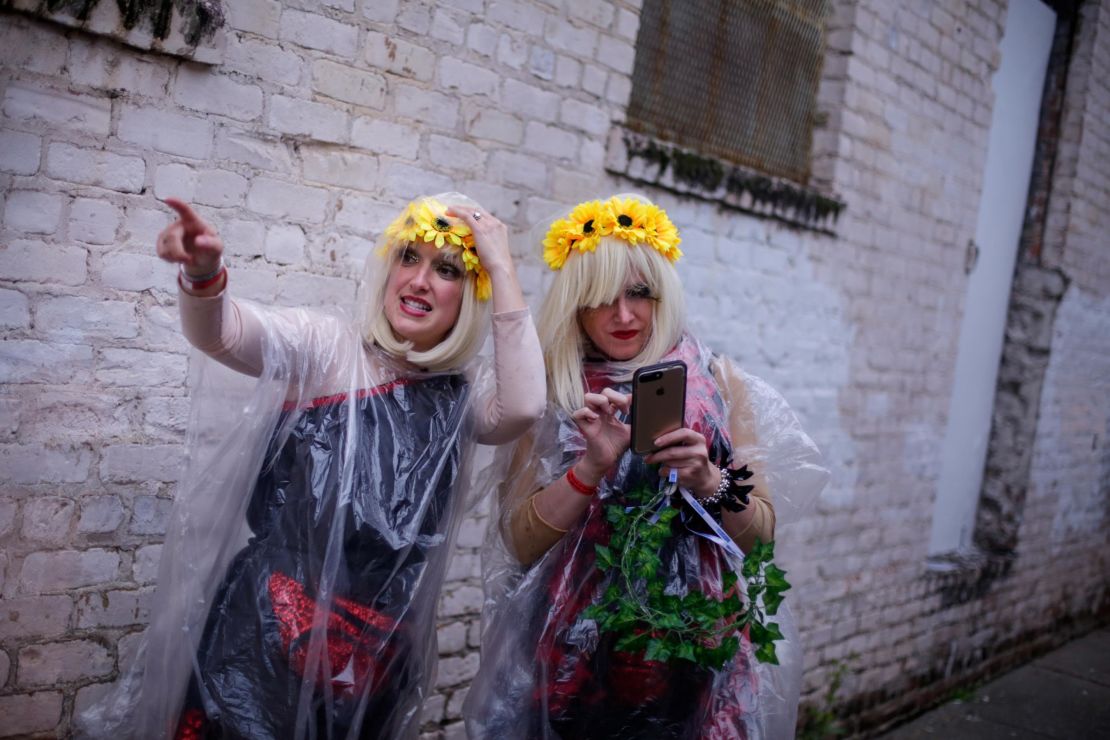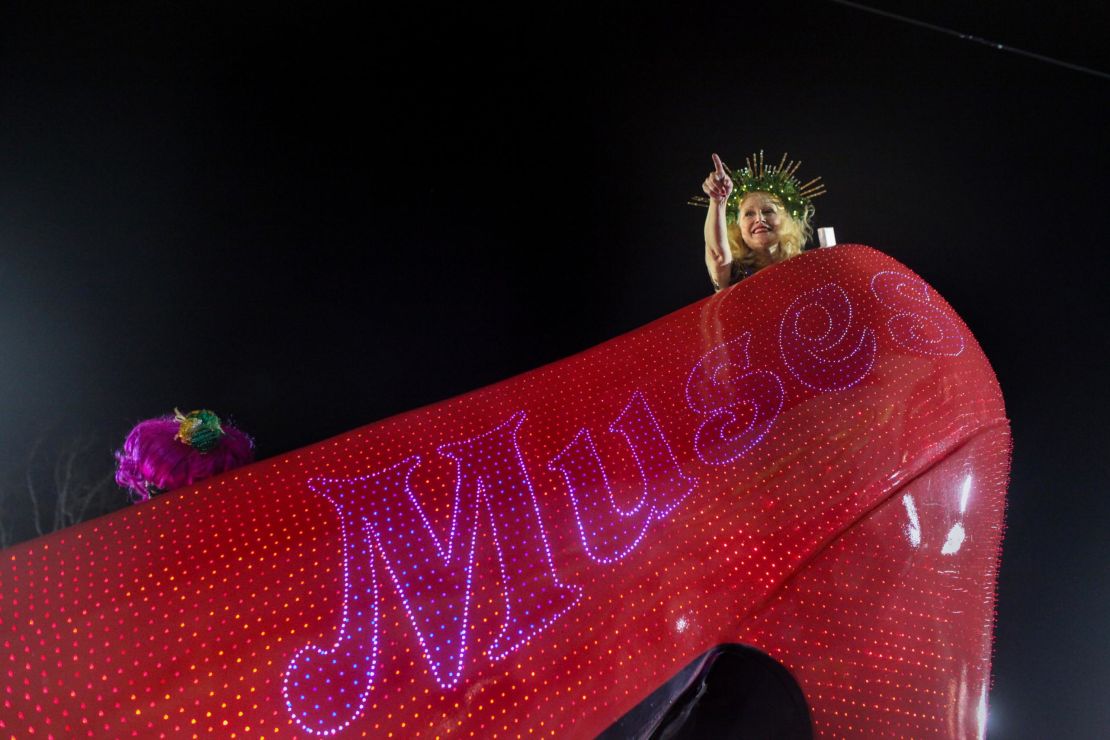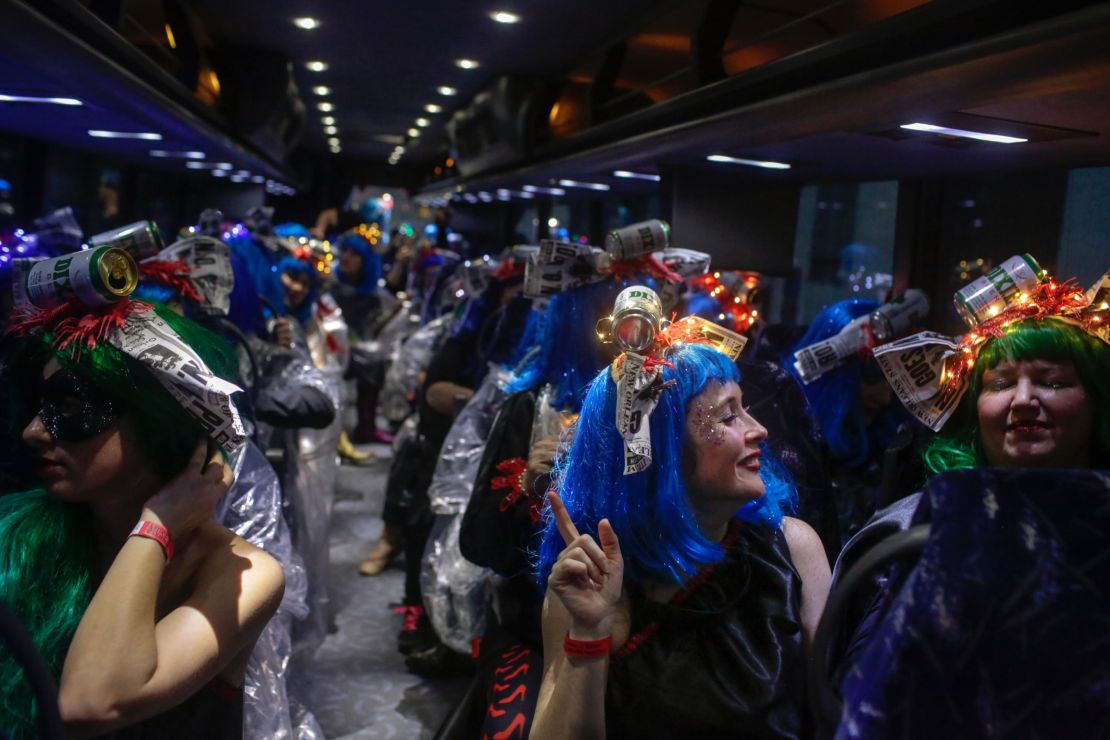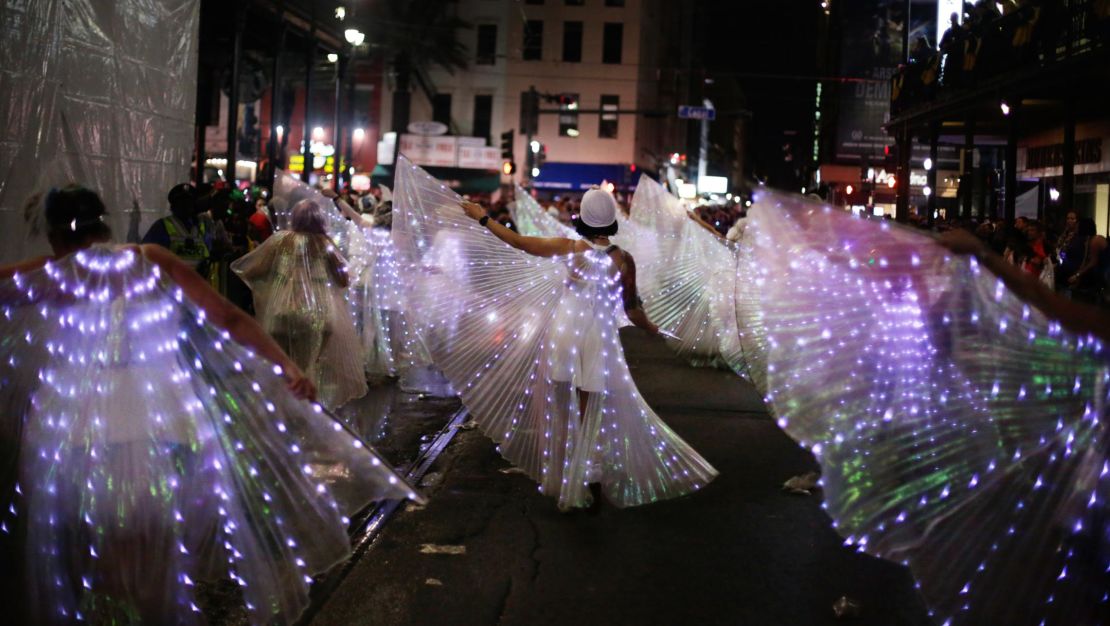Editor’s Note: Shannon G. Sims is freelance journalist. She participated as a dancer in the Krewe of Muses parade.
For New Orleanians, there is nothing quite as sad as rain during a Mardi Gras parade. And late last week, the forecast looked ominous for an all-female krewe (the name given to Mardi Gras performance groups) known as the Krewe of Muses.
Organizers were forced to push up three of Thursday’s scheduled parades, canceling one altogether. But just as New Orleans-born actress Patricia Clarkson climbed into the Muses’ float, which was painted sparkly bright red and carved into the shape of a high-heeled shoe, the rain suddenly stopped.
“The rain gods cooperated!” she recounted over the phone the next day. “It was an extraordinary night.”
The Krewe of Muses, founded in 2001, is one of dozens of groups to have organized parades in New Orleans since Mardi Gras season began early January. Ranging in size, from dozens to thousands of people, some of the krewes date back over 150 years. They all function as social clubs, hosting events for members throughout the year. The annual capstone event for each krewe is their Mardi Gras parade, the last of which will take place on Tuesday.

Each parade features decorated floats, with high school marching bands and local dance troupes between them entertaining the crowds. This year’s trucks referenced everything from the New Orleans Saints’ loss in the NFL playoffs to Supreme Court Justice Ruth Bader Ginsberg.
The floats often evoke social themes and local politics. As one of the only all-female Mardi Gras groups, the Krewe of Muses usually uses its floats to address sexism and gender issues.
Each year, an “Honorary Muse” is appointed to lead the group’s parade as it winds beneath the oak trees of St. Charles Avenue and through the sea of jubilant revelers awaiting strings of beads, which are traditionally thrown from the floats. In recent years, women including TV host Tamron Hall, singer Solange Knowles and civil rights activist Ruby Bridges have been bestowed with this honor.
This year was Clarkson’s turn. The actress is on a hot streak, having won a Golden Globe and a Critics’ Choice Award for her role in the HBO series “Sharp Objects.” She has also previously been nominated for an Academy Award, Screen Actors Guild awards, two Emmys, a Tony.

It wasn’t her first time up on the big red shoe (she also led the parade in 2012). But for Clarkson, Thursday’s Mardi Gras appearance ranks up there with her career highlights.
“These remarkable women of Muses represent the best of this city, and the diversity of this city,” she said. “To lead them was one of the biggest honors of my life.”
“For me to be the queen of the parade is almost better than winning an award in Hollywood,” added Clarkson, who said that her whole family came to watch her roll by, along with two of her best friends.
Growing role for women
Clarkson bridges two worlds: the world of New Orleans and the world of Hollywood. And both are undergoing significant changes for women. In New Orleans, for the first time in the city’s history, there is a female mayor, LaToya Cantrell.
“We have a ‘Madame Mayor,’ which is so kickass,” said Clarkson, who toasted Cantrell in her role as Honorary Muse.

And in Hollywood, the #metoo and #timesup movements have “finally put women in the driving seat,” as Clarkson put it. The actress said that what has happened in Hollywood over the past year “is the largest shift I’ve ever seen since I’ve been in the industry, since 1985.”
“The pendulum is definitely swinging,” she said. “I think now people actually want projects led by women. We’re sexy, we’re cool, we win awards, we’re good. We can lead – and we should.”
In this context, the Muses’ all-female display was “something civic, and larger than just a parade,” she added.
Clarkson certainly looked the part, dressed in regal attire with her hair pulled back by a Grecian wreath so she could better see the crowd. As well as waving to onlookers, the actress (like the other parade float riders) tossed beads, cups, Frisbees and other items to the screaming crowd, which was packed 10-deep in places along the five-mile route.

But many of the revelers were looking for one thing in particular: A custom-bedazzled high-heeled shoe. The shoe is the Muses’ trademark, and the krewe’s 1,500 members take great pride in meticulously crafting the shoes, which are usually hand-painted with portraits of local celebrities or other ornate designs.
“They take these shoes and they turn them into a work of art,” Clarkson said. “I gave them to little kids, to a disabled woman, to a woman who said she wanted one for her wedding. When I gave one to an older woman, she started crying.”
For those not from New Orleans, it can be hard to comprehend the emotional experience of attending a parade, let alone riding in one. But, Clarkson said, “it’s part of our culture in New Orleans – everyone wants to ride in a float.”
“(In the past), it was only men who could ride on floats,” she recalled, referencing the history of all-male Mardi Gras krewes.
“Now women are riding floats,” Clarkson said. “Now, honey, you can’t keep us off.”
This article was updated to clarify that Krewe of Muses is not the first all-female group to participate in Mardi Gras.











